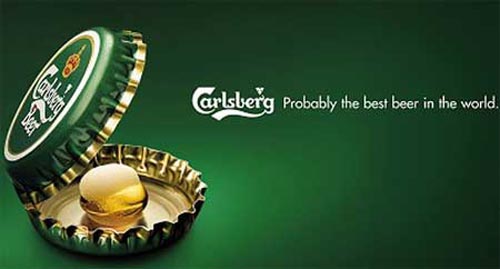1. Summary of the aesthetic & social context surrounding DDB ads in the 1950's & 1960's.
Up until the late 1950's, accountants were the main face of advertising. Well paid and from good educated backgrounds, it meant that the customer never met the creative minds behind their adverts, such as the copywriters. But underneath this exterior, a 'Creative Revolution' was beginning to form.
New, young, fresh and exciting minds were appearing all over the USA, developing and changing the arts from music to literature to revolutionary techniques within painting (such as Jackson Pollocks 'action painting' which had never been seen before) and especially advertising.
Andrew Cracknell, the writer of the book The Real Mad Men, highlights one of the remarks of DDB's most influential founder, Bill Bernbach. Speaking of events within the 1950's and 60's, Bernbach talks of these new creative minds, claiming that many before them had been "phony" and "it was the one thing they did not want to be, and the one thing they resented above all others about the current advertising".
This is supported by art director, George Lois, who worked for DDB in the 1960's: "It was an inspiring time to be an art director like me with a rage to communicate, to blaze trails, to create icon rather than con."
JWT (previously known as J.Walter Thompson) was DDB's rival advertising company during this era and had managed to maintain the number one spot for most of this time.
However, due to DDB's new way of working to create successful advertisements (compared to the usual bombardment and repetition used by JWT advertising and the neglect to communicate on a personal level with the customer) according to Cracknell "...a succession of campaigns began to demand that their competitors take them seriously".
Bill Bernbach was also the first to combine the creative skills of both the copywriters and the art directors by allowing them to work together. A move that clearly worked in the favor of DDB.
No longer afraid of the strict rules applied to advertising in the time before them, DDB's art directors and copy writers began working with force. Playing around with imagery of the campaign on the page itself, the aim was to create the message and the point of the product "visually".
Advertisements no longer had to be complicated and over packed with information, they just had to reflect the message provided by the product itself. An ad showed the product for what it was and the way it was. Promoting truth with a hint of creativity, aesthetically pleasing the consumers eyes.
2. Summary explaining why the 'Think Small' campaign 'epitomises the Creative Revolution'.
 |
| One of the DDB's Volkswagen 'Think Small' adverts of the 1960's. |
Volkswagen cars were originally made by German manufacturers for Hitler himself. In the 1960's, DDB were faced with the challenge to make the society of the USA, who had only a few years before suffered the loss of loved ones, were stuck in a struggling economic situation due to WWII and only 10 years before found out information of the tragic events of the holocaust, to love this unloved car. (Another challenge in itself due to a society use to luxurious and powerful cars, much unlike the VW.)
With the budget of $800,000, DDB created one of the most well known, and most effective campaigns of the era, changing advertising to what we know today.
Advertising before was consistently the same, bombarded by information and repetition, it had began to become boring and dull. Along with this, a bad name was being placed on advertising campaigns, mainly due to false claims with products. It was not a business many were proud to be in.
Carl Hahn, who was in charge of the VW in the United States, was beginning to become desperate with worry with the thought of an a agency unable to create a campaign to fit the product. Every other agency had consistently come up with the same proposal - a beautiful house, with happy people, well dressed with a glamorous looking car. These apparently "...didn't have any life".
DDB broke these rules. Pushing boundaries of both creativity and how advertising was used. Instead of viewing the customer as just that, those employed under the company were encouraged to empathise and understand more about the product and those who created it. Customers were allies, not simply ways of making money.
Helmut Krone, a German American, was the chosen art director for the campaign. He showed his dedication to the company by visiting Germany several times, applying his view that "the attitude and body language of the artwork should reflect the attitude and body language of the product". VW adverts didn't need to be cluttered and filled with information, it should be just like the car, simple and effective.
According to Andrew Cracknell, the VW 'Think Small' advertisements of the 60's was such a revolutionary campaign, that the minds who created it left a legacy so large, individuals working within DDB today "...feel obliged to try to live up to their standard".
With the simple black and white image and memorable tag line, DDB's Volkswagen 'Think Small' campaign highlighted the changing world of advertising and, therefore, epitomises everything the 'Creative Revolution' stood for.
Bibliography:
Cracknell, A. (2011)
The Real Mad Men [Book]
Wikipedia (2013)
JWT [Online]
http://en.wikipedia.org/wiki/JWT
Belleras, C. (2011)
Think Small [Online]
http://www.clemengertas.com.au/2011/10/what-is-creativity/think-small-february-22-1960-vw-beetle-ad/













